The Cretan Idyll of Harriet Boyd and Charles Henry Hawes
Posted: February 12, 2022 Filed under: Archaeology, Archival Research, Art History, Biography, Classics, Crete, Greek Folklore, History of Archaeology, Modern Greek History, Philhellenism, Women's Studies | Tags: Charles Henry Hawes, Crete, Harriet Ann Boyd 4 CommentsBY CURTIS RUNNELS – PRISCILLA MURRAY
Curtis Runnels, Professor of Archaeology at Boston University and an expert in Palaeolithic archaeology in Greece, and his wife Priscilla Murray, an anthropologist and Classical archaeologist, here contribute to From the Archivist’s Notebook a story about their purchase of a sketchbook from the early 20th century with watercolors depicting places and people on Crete.
We visited an antiquarian bookfair in Concord, New Hampshire, about twelve years ago and a booth belonging to a dealer from Vermont, who specialized in original artwork, caught our eye. Sorting through piles of miscellaneous materials, we found a few things relating to Greece, and a small (8 by 4 inches; 20 x 10 cm) artist’s sketchbook grabbed our attention. It was displayed on a table opened to a watercolor view that seemed familiar. Surely it was the entrance to the harbor at Herakleion on Crete! And indeed, penciled in one corner was the inscription “Candia,” the older name for the city which both confirmed the identification and provided a clue that the sketchbook, as dealers in antiques like to say, “had some age.” There were other artworks in the sketchbook that are dated to April 1905, and still others with various dates in 1915, and one dated to 1916. The artwork from 1905 was the most interesting for us. Turning the pages of the sketchbook we saw line drawings of dancers at Knossos and a man drawing water from a well in Siteia, pastels of houses labeled Knossos and “Sitia, as well as watercolors and line drawings of Mykonos, Ios, and other Cycladic islands, Sounion, and Athens. The unknown artist was interested particularly in the new Minoan finds from Knossos as is evident from the line drawings of wall paintings and artifacts in the “Candia Museum.”
Although there is no artist’s signature, we guessed that the artist must be someone interesting, perhaps even someone we would recognize. After all, how many Americans or British travelers (the fact that the titles are in English is the reason for assuming the nationality of the artist) were sufficiently interested in Knossos and the Minoans to visit Crete in 1905 at a time when there was much unrest on the island? We bought the sketchbook and took it home to do more research.
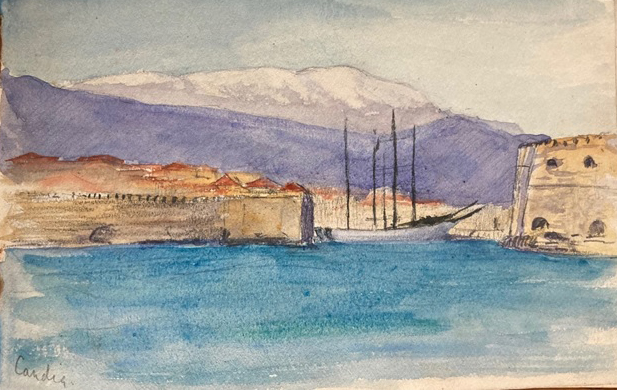
We were right in thinking that there were few Anglophone visitors to Crete in 1905. The island was experiencing political unrest that year as the result of the Theriso Revolt by Eleutherios Venizelos against the government of Prince George, which led to the imposition of martial law in March and armed clashes with rebels in April. It was not an inviting situation for casual visits by tourists. There was one group of people, however, who had strong reasons to visit the island. There was an International Congress of Archaeology being held in Athens in April of that year and at least one group of attendees, including the young American archaeologist Harriet Ann Boyd (1871-1945), was escorted to the island by Sir Arthur Evans to inspect the excavations at Knossos. This fact suggests a hypothesis. It is known that Harriet met her future husband Charles Henry Hawes on this trip and our sketchbook may possibly have belonged to him. There are two reasons for thinking so: the dates written on the front cover, 1905 and 1915 (see below), and inside the front cover the initials “ChH.” Other indicia of ownership are the penciled purchase price of “dr [drachmes] 3-25,” and the inscription “Crete, 1905.”
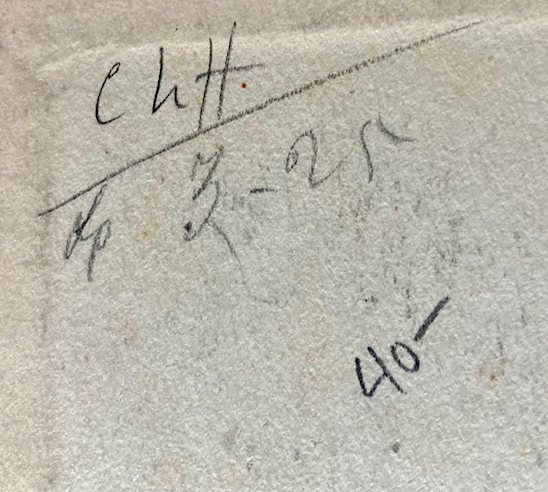
Charles Henry Hawes (1867-1943), a well-known Cambridge anthropologist, met Harriet Boyd for the first time in 1904 when he visited Gournia on Crete where she was directing her excavations. We do not know what happened in that first meeting, but in April 1905 Charles and Harriet found themselves on the steamer en route from Naples to Athens to attend the International Congress of Archaeology and we surmise that a romance bloomed as they renewed their acquaintance, for after the conference Charles (who was already on Crete measuring skulls for ethnological research) visited Harriet at Gournia for a second time. Though Charles may have returned to Athens in April, he was back on Crete again at some point, because Harriet, who was in Herakleion studying the finds from Gournia, relates that she saw Henry, as she preferred to call him, “quite often.” Whatever course their courtship took, things developed quickly because Henry (as we shall call him hereafter) proposed by letter (!) at the end of that summer, and soon after Harriet returned to the United States at the end of the year she announced her engagement. Henry and Harriet were married in Washington D.C. in the spring of 1906.
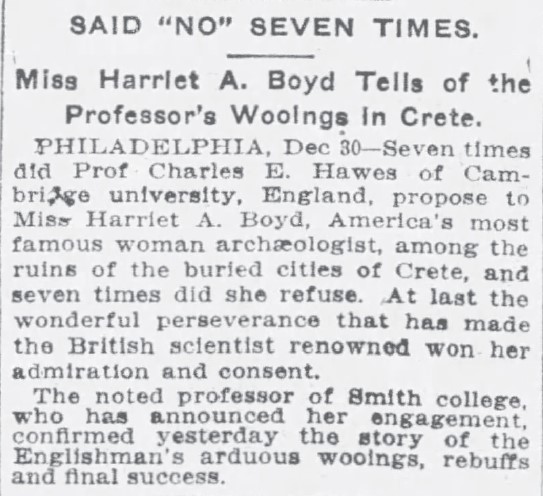
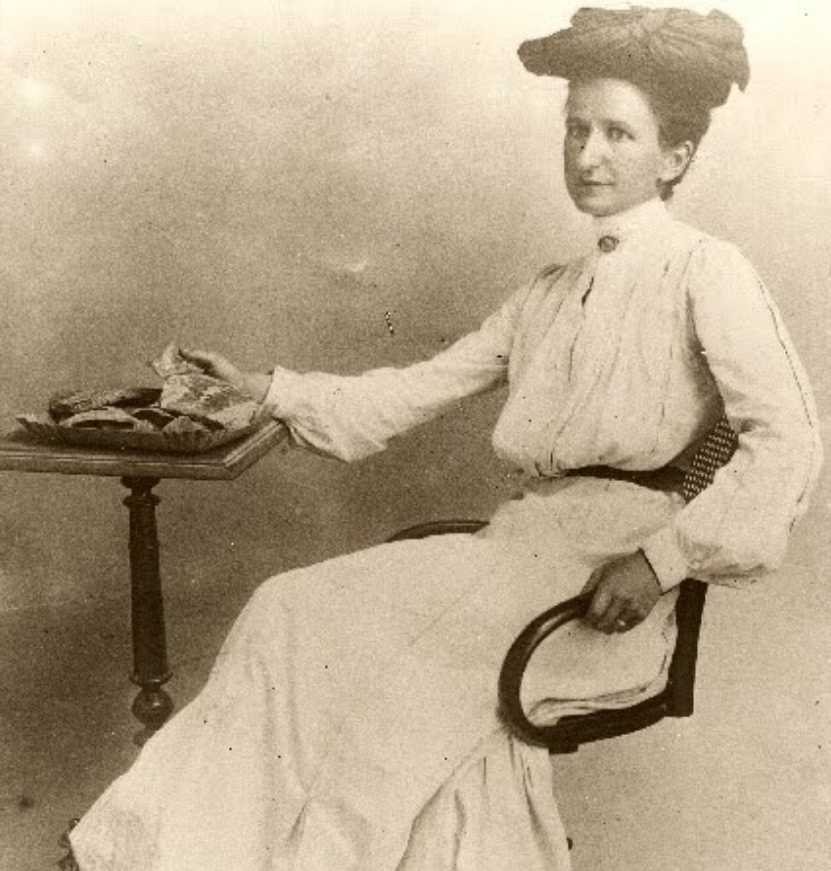
The Boston Globe, December 31, 1905 – Harriet Ann Boyd, 1900s.
These facts are related in an informal biography by Harriet Boyd Hawes’s daughter, Mary Allsebrook, published 30 years ago (Allsebrook 1992), and now the sketchbook with its watercolors, pencil drawings, pastels, and a few line drawings may provide a glimpse of those idyllic days in Crete in April 1905 when Henry and Harriet were falling in love. The locations and dates of the works in the sketchbook show that the artist was first in Candia and at Knossos about April 16 and made other sketches on Crete, the last in Sitia on April 18, whence we presume the artist sailed for Athens. En route to Athens, drawings, sketches, and paintings were made of Thera, Ios, Mykonos, and Delos dated on the 19th and 20th and the final artworks in Greece (Sounion and Mt. Hymettus) dated April 20 when the artist arrived in Athens. The chronology in Crete matches that of Harriet who reached Gournia on April 16 after her time in Knossos with Evans’ party.
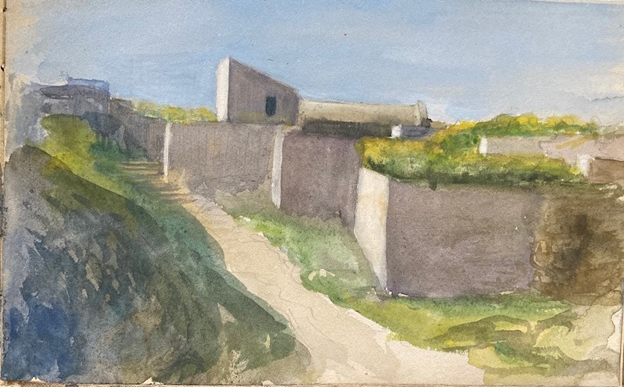

The clinching evidence in our view for the identity of the artist as Charles Henry Hawes comes from the other drawings and paintings in the sketchbook which were made in New England and are dated to 1915. These include views of Manchester, New Hampshire (or possibly one of the other New England Manchesters in Vermont or Massachusetts), West Falmouth and Naushon Island in Massachusetts, and Mt. Desert in Maine. We know that in 1915 Henry and Harriet were living in New Hampshire where Henry was teaching at Dartmouth College, and it is possible that these artworks were made during family trips to the coast. We also think that it is highly improbable that there were two persons in Athens and Crete in April 1905 at the same time as Henry and Harriet who also ended up residing in New England in 1915. Possible, but not plausible. Henry and Harriet must be the strongest candidates. Finally, we are confident the sketchbook was not Harriet’s but Henry’s because of the initials inside the front cover and from the dated artworks from April 18-20 reflecting a trip through the Aegean at a time when Harriet was still on Crete.
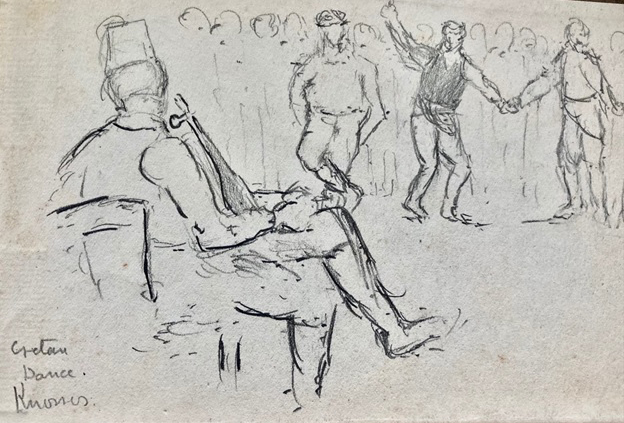
The draft images and finished watercolors and pastels are competent, if not inspired, and indicate that the artist had some training, otherwise the chief interest of the images is the depiction of the landscapes and people of Greece 117 years ago. There is one other set of images that are perhaps of interest. There are sketches and a pastel of two children (one dated 1916, the latest date in the sketchbook) as well as of a man and a woman. It is these pastels that grabbed our attention. One leaf in the sketchbook has two portraits of an adult woman. Are they perhaps two views of the same woman? And could this be Henry’s portrait of Harriet?
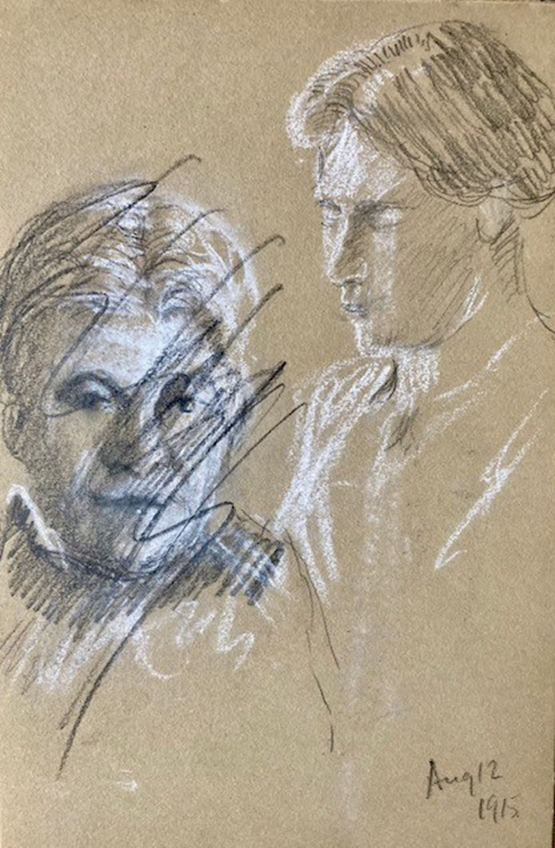
REFERENCES
Mary Allsebrook (ed.), Born to Rebel: The Life of Harriet Boyd Hawes. Oxford 1992.
Editor’s Note
Looking for more information about Charles Henry Hawes, I found that in 1903 he published In the Uttermost East: Being An Account of Investigations Among The Natives And Russian Convicts of The Island of Sakhalin, a lengthy account of a trip he made to Russia in 1901. Tessa Morris-Suzuki discusses Hawe’s journey to Russia in an informative article, titled Indigenous People Between Empires: Sakhalin through the Eyes of Charles Henry Hawes; she also reproduces many photos from his book, including one of Hawes (there are very few photos of his) clad in a long fur coat as he was preparing for his travels to Siberia.
In her article, we also learn that Harriet was his second wife: “in 1889 he [Hawes] married Caroline Maitland Heath, a well-to-do school teacher who was 26 years his senior: he was 22 and she was 48 at the time. Despite the gap in their ages, the evidence suggests that this was a love match. When Caroline became terminally ill not long after their marriage, Henry ‘nursed her most tenderly through the dreadful, prolonged agony of cancer which ended her life’. On her death, Caroline left her young widower almost £5000 – worth over half a million pounds in today’s money – and Henry, then in his late twenties, chose to invest his new-found wealth in two things: education and travel.”


Most enjoyable – thank you.
A good read. Thanks for sharing.
Delightful, as always!
[…] anthropologist and Classical archaeologist, contributed to From the Archivist’s Notebook a story (The Cretan Idyll of Harriet Boyd and Charles Henry Hawes) about their purchase of a sketchbook from the early 20th century with watercolors depicting places […]